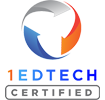The StrongMind Difference –
Introduction
Preparing students for a future in an information-based society requires equipping them with a broad range of skills. To be successful in modern workplaces and higher education programs, students need to be able to think deeply and critically, creatively solve problems, work in teams, communicate clearly across multiple media platforms, and keep up with rapidly changing technologies. The National Research Council (2012) uses the term “21st century skills” to describe a set of cognitive and interpersonal skills that are important to success in education, work, and other life contexts. This blend of knowledge and skills is based on the development of deeper learning, or transferable knowledge, in which the student becomes capable of taking what is learned in one situation and applying it to new situations, including how, why, and when to apply knowledge to answer questions and solve problems.
To facilitate deeper learning and help students become competent, lifelong learners, educators need to implement teaching practices and curricula that not only helps students gain content knowledge but also develop interpersonal competencies as well as metacognitive skills. Committed to providing high-quality education and fully preparing students for college, career, and citizenship, StrongMind developed a hybrid curriculum, grounded in research, which offers courses that combine academic rigor and pedagogically sound practices with instructional techniques that offer students the opportunity to gain important skills in self-directed learning, independence, and accountability.
The terms hybrid and blended learning are often used interchangeably and refer to an instructional approach that includes a combination of face-to-face instruction and computer-mediated instruction with some element of student control over path, pace, time, and place (O’Byrne & Pytash, 2015). StrongMind’s hybrid model combines individual online activities with teacher-led classroom activities as in-app resources allowing teachers to leverage the power of technology to customize student learning and differentiate instruction for students at varying achievement levels. The curriculum includes direct instruction, project-based learning, and teacher intervention options through technology-based, teacher-guided, and self-directed learning within each cohesive course. Offering learning opportunities in both online and synchronous or in-person environments allows students to learn, engage, and collaborate in multiple ways to gain instruction, practice, and attain competency with core course concepts and objectives.
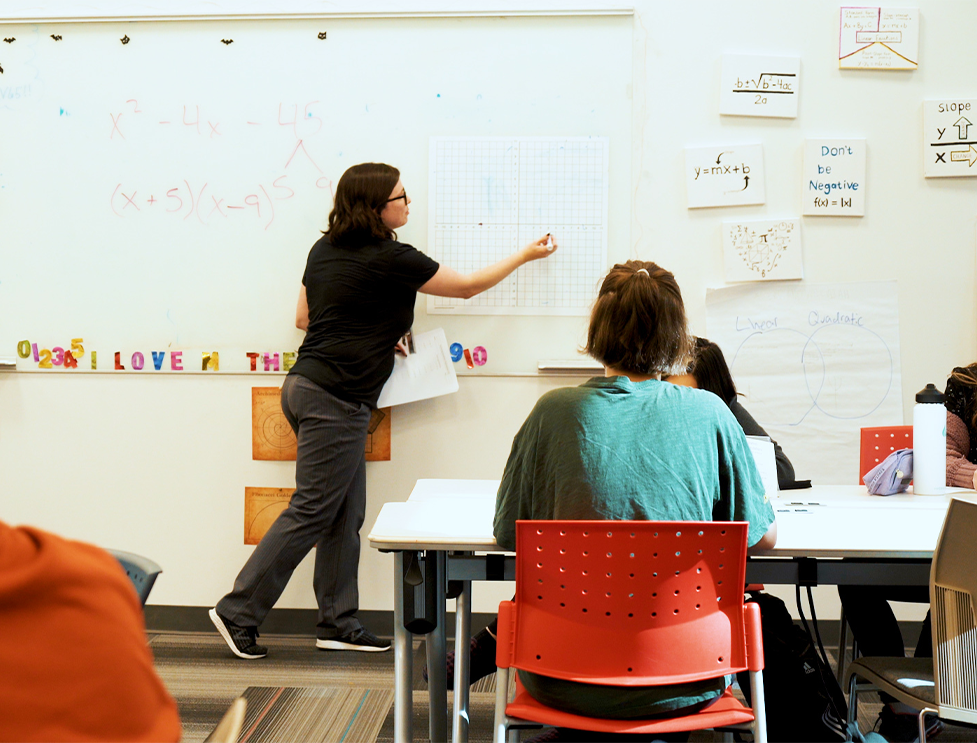
Research Based Instructional Techniques
Identifying Similarities and Differences
Many scholars consider the process of observing and reasoning about similarities and differences to be one of the most fundamental ways in which people learn (Beesley & Apthorp, 2010). Through these instructional techniques, students gain insight, draw inferences, and develop or refine schemas. The practice of contrasting can also help students with conceptual learning by comparing the features of relevant concepts, for example, the concept of linear functions becomes clearer when contrasted with nonlinear functions (Bransford, Brown, & Cocking, 1999).
To promote learning and help students develop conceptual understanding, StrongMind’s hybrid curriculum incorporates four strategies that have been found to be effective in engaging students in identifying similarities and differences: comparing, classifying, creating analogies, and creating metaphors (Marzano, Pickering, & Pollock, 2001). The strategies are defined as:

Comparing – the process of identifying similarities and differences between or among ideas or things.

Classifying – the process of grouping like things into categories based on their characteristics.

Creating or using analogies – the process of identifying relationships between pairs of concepts.

Creating or using metaphors – the process of identifying a general pattern in a specific topic and then finding another topic that appears to be different but that has the same general pattern.
By utilizing these strategies throughout the hybrid curriculum, students are able to add depth and connectivity to their knowledge, increasing the likelihood they will be able to apply the knowledge gained in one context to new or different contexts.
Summarizing and Note Taking
Summarizing and note-taking are instructional practices that facilitate learning by allowing students to record and reflect on important information. Note-taking requires more focus on accessing, sorting, and coding information than simply listening or reading, and is a multifaceted activity that involves the blending of comprehension and writing skills (Piolat, Olive, & Kellog, 2005). Similarly, summarizing requires students to select, sort, and combine information and can lead to increased comprehension (Beesley & Apthorp, 2010). Both summarizing and notetaking are complex activities that require students to condense and synthesize information. When used in conjunction, the positive effects of note-taking and summarizing on student performance are consistent across subjects and grade levels (Marzano, Pickering, & Pollock, 2001).
Throughout the hybrid curriculum, lesson plans include activities that require students to identify and synthesize essential information and then restate it in condensed form. For example, students might be asked to construct a written summary of a current news article. To complete such an assignment, students are first asked to read the article, then utilize a graphic organizer to take notes on important facts and ideas. They then write an objective summary of the article, highlighting the main topics. Discussion board posts are another example of assignments in which students are asked to reflect on, critically evaluate, and share thoughts and ideas about topics covered in the lesson. These posts also promote higher order thinking by prompting students with topics and questions requiring open-ended responses.
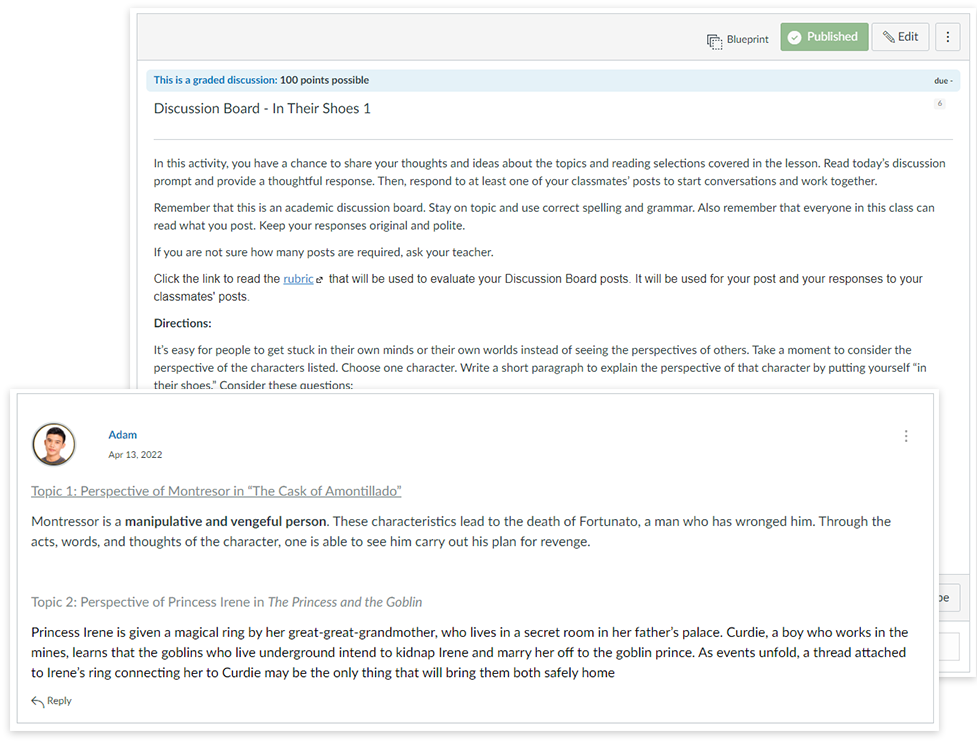
Reinforcing Effort, Providing Recognition, and Effective Use of Feedback
Many studies have found a link between student motivation and academic achievement. Theories of motivation suggest that students’ willingness to engage and persist in activities can be affected by their self-efficacy beliefs, interest in the task, and beliefs about whether or not they have control over the outcome (Bandura, 1986; Pintrich & Schunk, 2002). Two teaching strategies that have been shown to increase student motivation are reinforcing effort and providing recognition (Beesley & Apthorp, 2010). The practice of reinforcing effort, rather than recognizing ability alone, allows students to base success on their own progress and mastery of the task, rather than their performance in comparison to others. Tasks that are diverse, interesting, challenging, and that students think they can complete foster students’ task involvement (Wigfield, Eccles, & Rodriguez, 1998). Additionally, researchers have found that recognition can increase student motivation if students perceive the praise to be sincere, and if the praise promotes self-determination, encouraging students to attribute their performance to causes they can control (Henderlong & Lepper, 2002).
The hybrid curriculum is designed to increase students’ self-efficacy, intrinsic motivation, task value, and beliefs of control. By utilizing a mastery-oriented goal structure which emphasizes understanding and improvement, all students are provided with opportunities to receive recognition, because all students are able to put forth effort. Throughout the lessons, teachers have access to resource guides that they can use to help students learn to plan their own work schedules and organize how they progress through the work, promoting more positive competence beliefs. Students are able to connect their own personal effort to achievement as they see their progress, which reinforces the belief that effort truly does lead to success. Recognition occurs naturally and organically from the instructor as students work individually, and from peers as they engage in partner work. Within this mastery-oriented goal structure, academic success is supported by bolstering student motivation and persistence.
Effective use of formative feedback is also important for reinforcing students’ effort and increasing motivation. As one of the most significant tools for improving academic achievement, feedback has been found not only to help students correct misconceptions and reconstruct knowledge, but also to enhance motivation (Wang, & Wu, 2008). Black and William (1998) define formative assessment as “all those activities undertaken by teachers, and/or by their students, which provide information to be used as feedback to modify the teaching and learning activities in which they are engaged” (p.10). Students benefit most from formative assessment when they understand that their work can be improved and are able to identify aspects of their performance they wish to improve. Effective formative assessment practices allow the learner to clearly recognize the objective, or standard being aimed for; compare their current level of performance against that standard; and engage in actions which lead to some closure of the gap between their performance and the standard (Sadler, 1989). By using feedback in this way, students identify the strengths and weaknesses of their performance, so that behavior associated with success can be reinforced, and unsatisfactory aspects can be improved. Through this process, students engage in and develop self-assessment skills, a vital component of learning, that increases their sense of responsibility and enables them to be active participants in their own learning (Shepard, 2000).
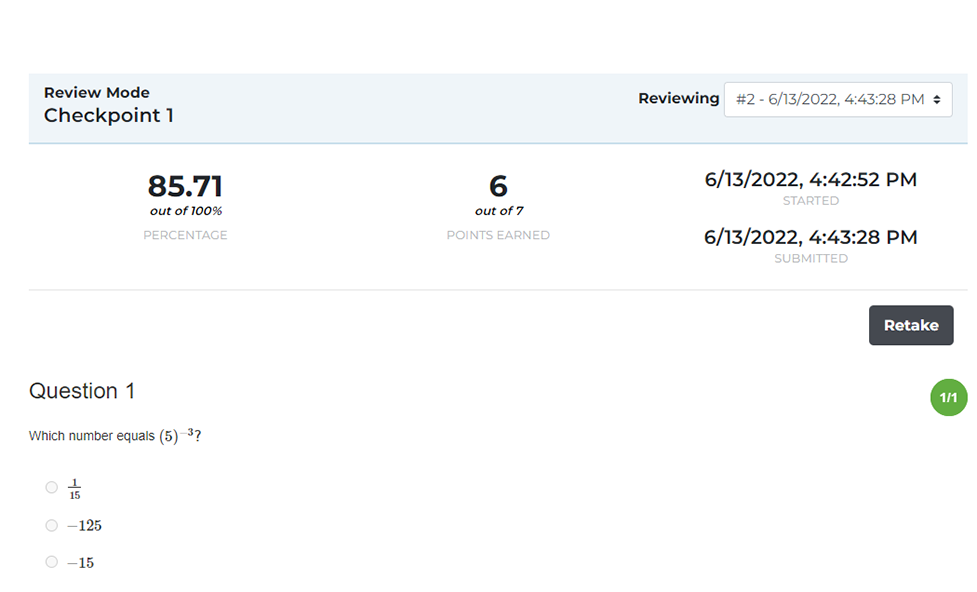
Informed by this research, StrongMind’s hybrid curriculum utilizes lower-stakes, formative assessments throughout each course. Two examples are Workbook assignments and Checkpoint assessments. Workbook assignments use targeted questions, offering students the opportunity to practice and assess their mastery of an activity’s objectives. These assignments are used at multiple points throughout each course. Each lesson also contains a Checkpoint assessment, which is designed to assess student mastery of lesson objectives and help identify gaps in knowledge that need to be filled before unit and final exams. Both Workbook assignments and Checkpoint assessments provide students with elaborated feedback in real-time.
Elaborated feedback contains additional information about the correctness of a response and is associated with increased higher order learning (Van der Kleij, Feskens, & Eggen, 2015). As students engage with these practice activities, they are provided with response contingent feedback that promotes cognitive processing by describing why incorrect answers are incorrect, and why the correct answer is correct.
Homework and Practice
Research on the effects of practice related to skill mastery has demonstrated that studying information across two or more sessions that are spaced apart in time often produces better learning than spending the same amount of time studying the material in a single session (Carpenter, Cepeda, Rohrer, Kang, & Pashler, 2012). Practice activities and homework, a specific type of practice, allow students to actively recall material previously presented to them and are instructional techniques that provide students with opportunities to deepen their understanding and skills (Beesley & Apthorp, 2010; Marzano, Pickering, & Pollock, 2001). StongMind’s hybrid curriculum utilizes lower-stakes practice activities at multiple points throughout each course. Workbook and Checkpoint assignments are two examples. Workbook assignments use targeted questions for practice and to assess students’ mastery of an activity’s objectives. Checkpoint assignments are designed to assess student mastery of lesson objectives, are lower-stakes assessments that can help students and teachers identify gaps in knowledge that need to be filled before unit and final exams. Additionally, StrongMind incorporates low-stakes interactive practice through web-based applications that engage the student beyond the traditional online question and answer format.
In addition to the multiple workbook activities integrated throughout the hybrid courses, the hybrid curriculum also incorporates offline homework teachers can assign for additional practice opportunities offline as well. Rather than completing 100% of the learning in the fully virtual environment, these additional assignment types allow students to deepen understanding and demonstrate learning of the online material offline as well.
Nonlinguistic Representations
The way in which information is presented can impact knowledge construction, with visual or nonlinguistic representations facilitating understanding of learning content through visual depictions (Jewitt, 2008). The dual-coding theory of cognition proposes that information is stored and expanded upon in two ways: verbal associations and visual imagery (Paivio, 1971). Engaging students by having them actively create nonlinguistic representations of learning material stimulates and increases attention to and interpretation of new knowledge. The goal is to produce nonlinguistic representations of knowledge in the minds of students and to do so by having students create visual displays (Marzano, Pickering, & Pollock, 2001).
Creating a nonlinguistic representation helps students deepen their understanding because it requires them to think about the content in new ways. This instructional practice has been found to be beneficial not only for students in general but to students with learning disabilities in particular (Kim, Vaughn, Wanzek, & Wei, 2004).
To help students represent, organize, and store information in ways that enhance learning, the hybrid curriculum utilizes a broad range of strategies to help students create nonlinguistic representations of information, including physical modeling, drawing and illustrations, graphic organizers, and generating mental images. For example, in Biology students are able to participate, either alone or in groups, in an activity where they choose a particular food item, identify which type of macromolecules are in the food item, and then model the molecules by drawing or using cutouts of monomers. In another activity, students are asked to draw the stages of meiosis in squares, comic book style. In using graphic organizers, students combine linguistics, in that they use words and phrases, with nonlinguistic information, using symbols and arrows to represent relationships. Students also create mental images when asked to think about concepts in terms of patterns, such as time sequences or cause and effect patterns.
In combining linguistic and nonlinguistic representations of knowledge, the hybrid curriculum helps students process and expand upon academic content and learn more effectively. With the help of a robust set of instructional exercises students are able to conceptualize, organize, and store information in ways that enhance learning and achieve deeper learning.
Project-Based Learning
Project-based learning (PBL) is a student-centered instructional method that occurs over an extended period of time, during which students work together to select and investigate a real-world topic, and produce a presentation, product, or performance to reflect their findings. Teachers serve as facilitators, providing scaffolding and guidance throughout the process. PBL is an effective method for improving problem solving skills, fostering deeper learning, allowing students to be more deeply engaged with the learning concepts, and gain important skills in collaboration, communication, and inquiry (Holm, 2011). PBL has been found to be a rigorous instructional method that is linked to increased academic achievement and gains toward college and career readiness (Summers & Dickinson, 2012).
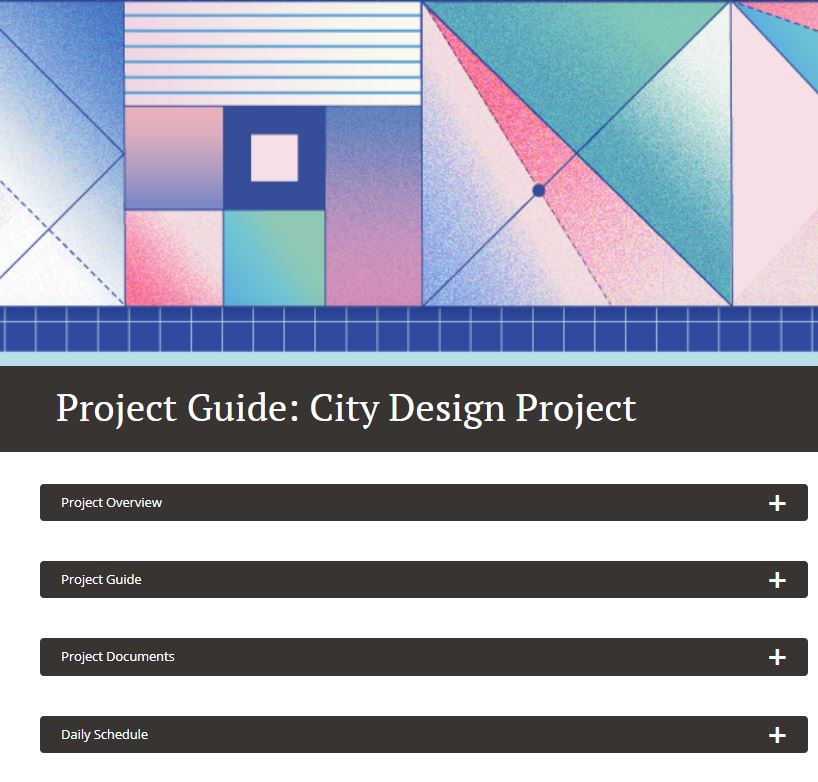
StrongMind’s hybrid curriculum utilizes well-designed projects as a standards-based pedagogy to allow students the opportunity to develop deep content knowledge as well as critical thinking, collaboration, problem solving, and communication skills. Each hybrid course includes a PBL activity aligned to the targeted standards within the grade and course. The projects include student-facing objectives that mirror the teacher objectives, providing students with success metrics and a clear understanding of how to be successful. The intent is to help students become self-directed learners who can apply sound higher-order thinking skills. For example, in Geometry, students are able to participate in a project where they assume the role of a city designer, utilizing properties of parallel lines, transversals, angle relationships, and perpendicular lines to design and construct their own city layout. As they complete the project, students are guided by clear objectives as well as pacing benchmarks and evaluation criteria. In addition to building upon their understanding of geometric concepts, the project allows students to hone important 21st century skills as they provide useful feedback to others, effectively utilize presentation skills, and take responsibility for doing their fair share of work. The project also requires students to organize, analyze, and synthesize information to develop conclusions and solve problems.
Educators utilizing StrongMind’s hybrid curriculum have the flexibility to assign PBL activities to individual students or as group instruction. When utilized as a group assignment, the PBL activities foster cooperative learning experiences. Cooperative learning is a powerful group-based instructional strategy that occurs when students work together to accomplish shared goals. Cooperative learning contains specific elements and is very different from simply having students work in groups. Social Interdependence Theory describes five conditions that are essential to effective cooperative learning (Johnson & Johnson, 2005):

Group processing, in which each member analyzes their own and the group’s ability to work together.

Instruction in group skills – where students develop and utilize social and collaborative skills needed to work with others, such as communication, leadership, trust building, decision making, and conflict resolution.

Promotive interaction – when group members encourage and facilitate each other’s efforts to achieve.

Individual accountability – where all group members realize that each of them is responsible for contributing to the work of the group.

Positive interdependence – when the success any one group member is linked with the success other members.
Project based learning also provides teachers the opportunity to authentically assess and effectively evaluate student learning. One of the differentiators between PBL and other forms of learning, is that PBL culminates in an end product where students display their work, offering direct evidence of proficiency. This end product allows students to demonstrate in-depth knowledge of targeted standards by performing more complex tasks. By assessing students’ success in a way that is relevant to the skills required of them once they have mastered the content, educators can be certain that students truly have knowledge of the learning material.
Generating and Testing Hypothesis
Asking students to generate and test hypothesis is an instructional technique that requires students to apply previous or developing knowledge to novel situations (Marzano, Pickering, & Pollock, 2001). The process involves two types of thinking: deductive and inductive. In deductive thinking, students rely on prior knowledge to make predictions about future events or novel situations. In inductive thinking, students gather information that helps explain events or phenomena (Beesley & Apthorp, 2010). Research has also found that asking students to explain the principles they use to form a hypothesis and why the hypotheses makes sense promotes logical thinking skills and deeper understanding of the concepts they are applying (Lavoie, 1999). StrongMind’s hybrid curriculum utilizes six strategies that have been found to be effective in engaging students in generating and testing hypotheses (Marzano, Pickering, & Pollock, 2001):

System analyses – students make predictions about what would happen if changes occur within a larger system such as an ecosystem, anatomical system, or system of government.

Problem solving – using their understanding of concepts related to a problem, students consider different approaches to a solution and then generate and test their hypotheses.

Historical investigation – students construct plausible scenarios for events from the past. To test their hypotheses, students seek out and analyze information to determine if the hypotheses are supported by evidence.

Invention – students engage in an iterative process of hypotheses generation and testing the results as they use their understand of specific concepts to meet a need or improve situations in a new or novel way.

Experimental inquiry – using the scientific method as a problem-solving framework, students generate hypotheses, collect and analyze data, and draw conclusions based on their findings.

Decision making – using hypothetical scenarios, students select solutions that are either the best or most relevant to solve problems.
In utilizing these research-based strategies for increasing understanding, students are able to apply previous or developing knowledge to novel situations, have a clearer understanding of lessons, make connections between concepts, and are better able to transfer knowledge to new situations.
Activating prior knowledge
Research on learning and transfer has identified important principles for structuring learning experiences that enable people to use prior knowledge in new settings. In order to achieve deeper learning, students must organize new information and relate it to relevant prior knowledge (NRC, 2012). The use of cues, questions, and advance organizers allows students to activate prior knowledge and create a cognitive framework of familiar concepts with which to incorporate new information.
Explicit cues provide students with a straightforward preview of what they will experience in a lesson and help bring to mind relevant knowledge and experiences. Questions that elicit inferences are important for helping students fill in missing information in the material presented. And an advance organizer is a strategy for helping students use background knowledge by introducing a lesson and drawing attention to important points and relationships that will be presented (Beesley & Apthorp, 2010). Lessons in StrongMind’s hybrid curriculum utilize cues, questions, and advance organizers to connect what students are learning with relevant prior knowledge. Each lesson includes an introduction that serves as an advanced organizer, presenting the lesson topic and illustrating the relationships between what the students are about to learn and the information they have already learned. This directs students’ attention to what is important in the upcoming lesson, highlight relationships among ideas that will be presented, and remind students of relevant information that they already have.
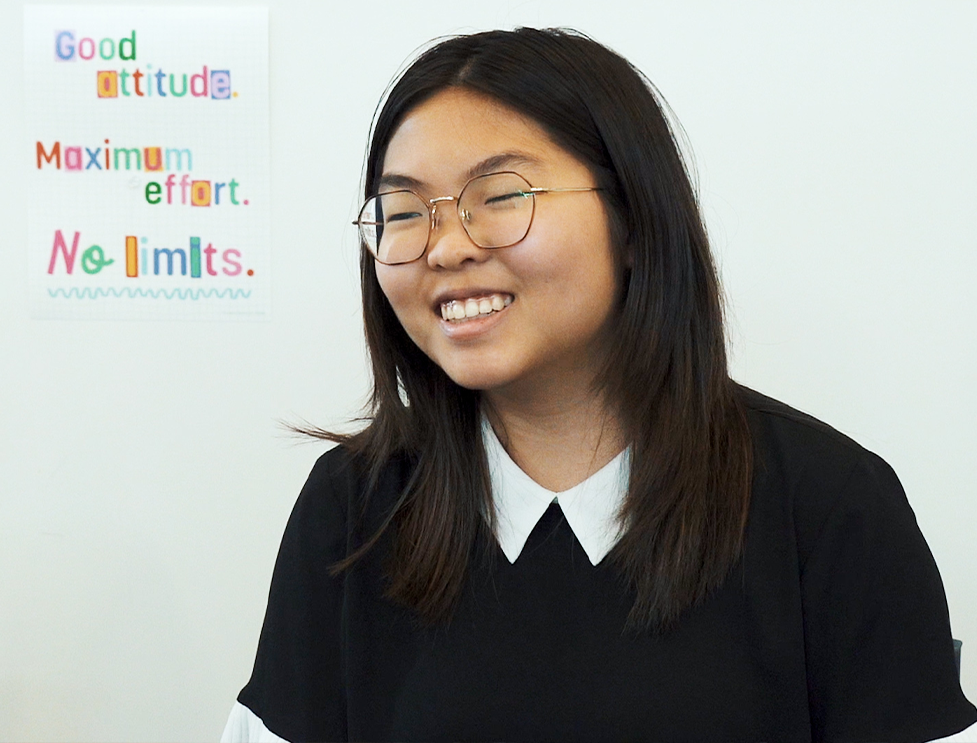
Analytic questions are also utilized to elicit inferences, an important process for guiding students in the process of identifying and filling in missing information in presented material. Inferences can be about things, people, actions, events, or states of being. These analytic questions help students analyze and critique information, thus facilitating a deeper understanding of the content. For example, students might be asked to identify errors in reasoning or arguments, construct and support claims related to a specific construct, or consider the perspective of another person.
The curriculum is specifically designed promote deeper learning by providing structured learning experiences that require students to organize new information and relate it to prior knowledge. Throughout the lessons, we help students bring to mind relevant knowledge, verify that knowledge, connect it to their own lives, reflect on new ideas, and tackle challenging problems.
Research Based Instructional Techniques
Provide Multiple Means of Representation (the “What” of Learning)
Students differ in the ways they perceive learning content. Students with language differences, sensory disabilities, or learning disabilities may require different ways to access content. Other students may simply grasp information more quickly and efficiently through visual or auditory means than text. UDL recommends offering information in more than one format (CAST, 2018). StrongMind courses utilize a variety of instructional formats including animation, video, interactive illustrations, graphic displays, and text with optional read-aloud support. This gives students a chance to access the material in ways that are best suited to their learning style.
Research also suggests that web sites with consistent and predictable navigation patterns assist individuals with special needs (Keeler & Horney, 2007). Universal design principles stress the need for the proper design and presentation of information to support learner comprehension so that all students have access to knowledge (CAST, 2018). StrongMind’s learning platform supports student comprehension and active information processing skills by using a consistent instructional design pattern that ensures students can predictably navigate the courses. The layout is clean and concise, requiring no excessive clicks or scrolling, with verbal and visual aids so students have all the necessary tools to succeed. StrongMind also utilizes universal design principles by highlighting patterns, critical features, big ideas and relationships (CAST, 2018). Color based instructional cueing within the learning content helps inform students when to use certain educational learning strategies, supporting them with scaffolding that helps overcome differences in metacognitive abilities. Our color-coded information boxes help students build associations and connect specific learning strategies with the content. For example; yellow is used to highlight important points in “Helpful Hints” and “Do You Remember?” callouts, orange explains diagrams and encourages students to engage with “Try it Yourself” or “Explore Further” activities, purple is used to call attention to fun facts, blue communicates key concepts and ideas, and red conveys essential information students must know before moving on.
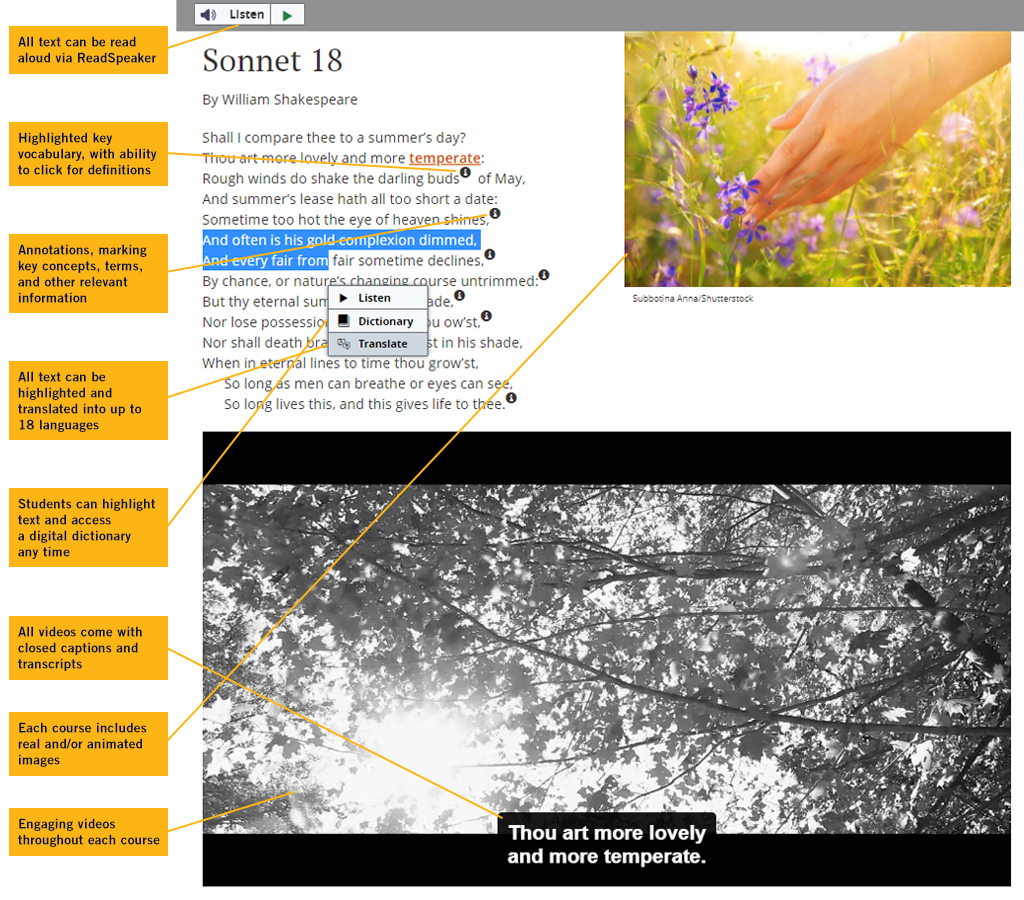
Universal Design for Learning (UDL) is a set of principles and practices that help to provide all students an equal opportunity to succeed. The approach offers flexibility in the ways students access learning material, engage with it, and demonstrate what they know. The goal of UDL is to reduce barriers and create environments and tools that are usable by as many people as possible. The Center for Applied Special Technology (CAST) developed a framework for UDL, based on research in neuroscience. The framework is organized around three main principles related to offering multiple means of representation, action and expression, and engagement (CAST, 2011). The CAST framework addresses variability in learners and makes learning more accessible in general education settings, which is where most students with learning and thinking differences spend most, if not all, of the school day.
Driven by research in how students learn, best instructional practices, and design principles shown to create digital learning environments that are usable by as many students as possible, StrongMind purposefully designed and developed a high-quality hybrid curricula to provide engaging and meaningful learning opportunities for students. The course delivery platform contains embedded support materials like visual aids, conceptual information, and helpful learning strategies. With online tools, research-based content and formatting, and real-time student performance feedback, information is presented in ways that adapt to the learner, instead of asking the learner to adapt to the information. In utilizing the three UDL principles, our goal is to use a variety of teaching methods to remove barriers to learning, building in flexibility to make it easier for students to use their individual strengths and progress from where they are.
Provide Multiple Means of Action and Expression (the “How of Learning”)
StrongMind strives to accommodate diverse learning styles and abilities with proactive approaches in our instructional design process, allowing students multiple ways to develop and express what they know. Our courses help learners develop by providing educators with the tools necessary to offer graduated levels of support for practice and performance. The course delivery platform also includes several features that offer instructors the flexibility and control they need to adjust instructional and assessment approaches and meet individual student needs.
It is not uncommon for students with disabilities, and their parents, to feel overwhelmed by coursework (Bryan, Burstein, & Bryan, 2001). Unlike the traditional classroom experience, students in the hybrid courses can be given the option to review the online course content in advance. This allows them to prime their learning experience and review the course prior to its start date. In addition, the introduction at the beginning of each lesson, provides an overview of upcoming concepts. Research suggests that providing these types of overviews can increase learning outcomes by providing a content preview (Luiten, Ames, & Ackerson, 1980) and identifying the important upcoming concepts (Mautone & Mayer,2001), which is especially important for complex or novel topics (Lorch, 1989).
Optimizing the use of scaffolding is also important for student success. CAST (2011) recommends providing students with graduated levels of support for practice and performance. This requires providing differing degrees of autonomy, with highly scaffolded support for some students and less for others who are ready for independence. The hybrid curriculum ensures learning standards are delivered incrementally, provides extensive scaffolding, and offers instructors the tools necessary to help students master learning standards without becoming overwhelmed. The sequential and mastery-based checks and balances within the courses help identify where students need help when they are struggling. Instructors can customize access to more advanced topics and ensure students have learned prerequisite concepts and then move on to more advanced concepts when they are ready. The course delivery platform also enables instructors to adjust the assessment approach to meet individual student needs. When appropriate, instructors can offer students additional attempts on assignments, provide un-timed assessments, and extend due dates.
Provide Multiple Means of Engagement (the “Why” of Learning)
Learners differ in the ways in which they can be motivated to learn and engage. Some learners are engaged by novel constructs or spontaneity whereas others can be intimidated by these situations. Some might like to work alone, while others prefer to collaborate with peers. There is not one optimal means of engagement for all learners in all contexts, therefore providing multiple options for engagement is crucial. StrongMind’s hybrid courses include multiple modes for engagement. Students are offered varying ways to communicate, as well as learn and solve problems.
Instruction within traditional classrooms is typically conducted synchronously, sometimes causing students with limited language or processing ability to struggle to participate in class discussions, particularly when multiple conversations are occurring at once.
This type of obstacle can become a barrier to academic success for students with disabilities (Cook & Gladhart, 2002). StrongMind’s hybrid curriculum affords opportunities for synchronous as well as asynchronous engagement and instruction. For many students, the added component of true “anywhere, at any time” education in the hybrid curriculum can relieve the distractibility that comes with synchronous learning. In addition to face-to-face discussions in the classroom, students can participate in conceptual conversations with peers or their teacher in the course’s online discussion boards. The additional discussion opportunity engages students with their peers or teacher in academically meaningful conversations they might not otherwise be willing to or able have in a physical classroom setting.
Students are also offered opportunities to learn and solve problems using a variety of strategies. They can work independently or in groups; use interactive tools such as discussion boards and interactive illustrations; and demonstrate understanding in multiple ways such as writing, speaking, drawing, or creating storyboards. For example, each hybrid course contains a project-based learning opportunity. This type of assessment allows students to apply higher-order learning skills in a structured environment and offers students multiple ways to learn, interact, and receive feedback. Over the course of the project, students are asked to demonstrate new skills, however the familiarity of the assignment minimizes the cognitive effort needed to engage with each step. Students work both independently and in groups, develop a variety of competencies, and receive instruction and feedback from the instructor as well as peers. They also have autonomy in helping select how the group will demonstrate knowledge gained from the project.

UDL researchers recommend using mastery-oriented feedback to increase engagement and motivation. This type of feedback emphasizes the role of effort and practice rather than a fixed notion of performance (CAST, 2011). As students engage with the online portion of StrongMind’s hybrid curriculum, they receive immediate and specific feedback as they complete practice and assessment activities. Through the use of targeted, response-contingent feedback, students learn not only if their answer is correct or incorrect, but why. Research has shown that students with learning disabilities who are provided response-contingent feedback can acquire, maintain, and generalize the self -determination and self-advocacy skills necessary for academic success, helping them become more self-regulated learners (Durlak, Rose, & Bursuck, 1994; Means, Toyama, Murphy, Bakia, & Jones, 2009).
Conclusion
Throughout StrongMind’s hybrid curriculum, students are provided with robust instructional activities informed by research and best practices. We couple pedagogically sound practices with rigorous content to provide an engaging and meaningful educational experience designed to equip students with the knowledge and skills necessary for them to achieve their full potential as adults. Instruction is designed to promote deeper learning that can be applied across situations to allow students to be successful in education, work, health, and other life contexts. The courses offer activities, such as project-based learning, that foster the metacognitive and interpersonal competencies students need to become lifelong learners and gain important skills necessary for collaboration and communication.
StrongMind’s learning platform and courses also utilize Universal Design for Learning principles to address variability in learners, reduce barriers, and create a digital learning environment that is usable to as many students as possible. In offering students multiple means of representation, action and expression, and engagement, we provide a learning approach that offers flexibility in the ways students access learning material, engage with it, and demonstrate what they know. Tools embedded within the courses also allow instructors the flexibility and control they need to provide students with the individualized supports they require to ensure success.


